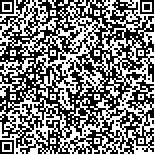| 引用本文: | 麦丽克姆·麦图如孜,高姝燕,努尔玛娜提·胡安别克,周子虔,王春,祖力皮卡尔·吾斯曼,霍仕霞,李治建.补骨脂生品及不同炮制品水提物小鼠急性毒性试验[J].中国现代应用药学,2023,40(19):2617-2627. |
| MALIKAM Matturzi,GAO Shuyan,NUERMANATI Huanbieke,ZHOU Ziqian,WANG Chun,ZULIPKAER Wusiman,HUO Shixia,LI Zhijian.Acute Toxicity Test of Water Extracts from Unprocessed and Different Processed Products of Psoraleae Fructus in Mice[J].Chin J Mod Appl Pharm(中国现代应用药学),2023,40(19):2617-2627. |
|
| |
|
|
| 本文已被:浏览 1152次 下载 1386次 |

码上扫一扫! |
|
|
| 补骨脂生品及不同炮制品水提物小鼠急性毒性试验 |
|
麦丽克姆·麦图如孜1,2, 高姝燕3, 努尔玛娜提·胡安别克1,2, 周子虔1,2, 王春2, 祖力皮卡尔·吾斯曼1,2, 霍仕霞1,3, 李治建1,3
|
|
1.新疆医科大学, 乌鲁木齐 830011;2.新疆维吾尔自治区维吾尔医药研究所, 乌鲁木齐 830011;3.新疆维吾尔自治区维吾尔医医院, 乌鲁木齐 830049
|
|
| 摘要: |
| 目的 比较补骨脂生品及不同炮制品水提物的急性毒性特点及差异。方法 将昆明小鼠分为补骨脂生品组、清炒组、盐炙组、雷公组及酒浸组等不同浓度组和对照组共36组,各组小鼠以0.04 mL·g-1单次灌胃给药并观察14 d,检测小鼠体质量、血清生化、死亡率,计算LD50值等,研究补骨脂生品及不同炮制品的毒性差异。结果 不同方法给药前小鼠体质量无统计学差异,给药组第1天部分小鼠体质量有一定的下降;生品组、清炒组、盐炙组、雷公组、酒浸组LD50值分别为含生药63.20,56.92,51.95,88.61,59.02 g·kg-1。与对照组相比,雄性小鼠生品组血清ALT、TBA水平显著增加;清炒组血清ALT、AST、TBA显著增加,ALP水平无统计学差异;盐炙组、雷公组和酒浸组血清ALP、ALT、AST、TBA水平显著升高。与对照组相比,雌性小鼠生品组、盐炙组、雷公组和酒浸组血清ALP、ALT、AST、TBA水平显著增加;清炒组血清ALT、AST及TBA水平显著升高;所有组TP水平显著降低。病理学结果显示,对照组小鼠肝脏均未见异常;生品组、清炒组、盐炙组、雷公组及酒浸组小鼠肝脏出现肝细胞空泡样变,伴有肝细胞糖原变性、肝细胞胞浆疏松,部分出现小叶中央型肝细胞肥大等病理性改变;生品组与其他炮制组相比致小鼠肝脏损伤程度:生品组>酒浸组>清炒组>盐炙组>雷公组,其中酒浸法致肝脏病变程度最大,而雷公法最小。结论 补骨脂通过不同方法炮制后其毒性有所不同,以LD50判断,雷公法炮制品毒性明显降低。 |
| 关键词: 补骨脂 炮制 水提物 LD50 毒性 |
| DOI:10.13748/j.cnki.issn1007-7693.20223860 |
| 分类号:R284.1 |
| 基金项目:国家自然科学基金项目(82060782);新疆维吾尔自治区重点研发任务专项项目(2022B03012-4);天山英才项目(2022TSYCCX0021,2022TSYCLJ0009);中医药传承与创新“百千万”人才工程(岐黄工程)-青年岐黄学者 |
|
| Acute Toxicity Test of Water Extracts from Unprocessed and Different Processed Products of Psoraleae Fructus in Mice |
|
MALIKAM Matturzi1,2, GAO Shuyan3, NUERMANATI Huanbieke1,2, ZHOU Ziqian1,2, WANG Chun2, ZULIPKAER Wusiman1,2, HUO Shixia1,3, LI Zhijian1,3
|
|
1.Xinjiang Medical University, Urumqi 830011, China;2.Institute of Uygur Medicine, Xinjiang Uygur Autonomous Region, Urumqi 830011, China;3.Hospital of Xinjiang Traditional Uyghur Medicine, Urumqi 830049, China
|
| Abstract: |
| OBJECTIVE To compare the acute toxicity characteristics and differences of water extracts from unprocessed and different processed products of Psoraleae Fructus in mice. METHODS Kunming mice were divided into 36 groups, including Psoraleae Fructus raw product group, stir-fried group, salt-baked group, Leigong group, and wine soaked group, as well as control group. Each group of mice was given a single intragastric administration of 0.04 mL·g-1 and observed for 14 d. The body weight, serum biochemical indices, and mortality of the mice were detected, and the LD50 value was calculated to study the toxicity differences of Psoraleae Fructus raw product and different processed products. RESULTS There was no statistically significant difference in the body weight of mice before administration in different groups. On the first day of administration, some mice in the administration group showed a certain decrease in body weight. The LD50 values of the Psoraleae Fructus raw product group, stir-fried group, salt-baked group, Leigong group, and wine soaked group were 63.20, 56.92, 51.95, 88.61, 59.02 g·kg-1, respectively. Compared with the control group, the serum ALT and TBA levels in the male mice in the Psoraleae Fructus raw product group were significantly increased; the serum ALT, AST, and TBA levels in the stir-fried group were significantly increased, but the ALP level was not statistically significant; the serum ALP, ALT, AST, and TBA levels in the salt-baked group, Leigong group, and wine soaked group were significantly increased. Compared with the control group, the serum ALP, ALT, AST, and TBA levels in female mice in the Psoraleae Fructus raw product group, salt-baked group, Leigong group, and wine soaked group were significantly increased; the serum ALT, AST, and TBA levels in the stir-fried group were significantly increased; all groups had significantly decreased TP levels. Pathological results showed that there was no abnormality in the liver of mice in the control group; the liver of mice in the Psoraleae Fructus raw product group, stir-fried group, salt-baked group, Leigong group, and wine soaked group had pathological changes such as vacuolar degeneration of liver cells, glycogen degeneration of liver cells, loose cytoplasm of liver cells, and partial central hepatocellular hypertrophy; the degree of liver damage in mice caused by different processed products compared with the raw product group: raw product group > wine soaked group > stir-fried group > salt-baked group > Leigong group. Among them, the wine soaking method caused the highest degree of liver damage, while the Leigong method caused the least. CONCLUSION Psoraleae Fructus has different toxicities after being processed by different methods. According to LD50, the toxicity of Leigong method processed products is significantly reduced. |
| Key words: Psoraleae Fructus processing water extract LD50 toxicity |
|
|
|
|
